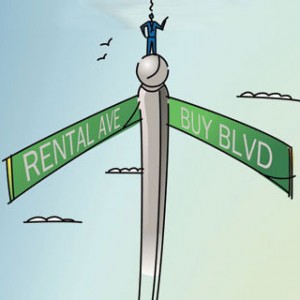
1. Paint rooms a neutral shade and add a few accent walls throughout house in a different color to stand out
2. Add some fabric window treatments (they do not have to be custom made) to soften walls and add more color
3. Rent a carpet steam cleaner and deep shampoo your high traffic areas and brighten up your old rugs
4. Trim your trees and shape up your garden, perhaps by adding some new plants for variety and color
5. Clean out the garage to get rid of junk and clutter, plus you may even make a few bucks selling unused items on Craigslist or eBay
6. Reconsider your current furniture layout, as sometimes moving pieces around the house can maximize their look
7. Make those small home repairs you have been putting off, like fixing the gutters or oiling squeaky hinges
8. Consider adding some stone or tile as a wall accent or backsplash in your kitchen or bathroom
9. Resurface and stain your old outdated kitchen cabinets, then add some nice new hardware to set them off
10. Add some do-it-yourself landscape lighting to your garden to shine up on the trees and house and down on the pathways
10 Ways to Increase Your Home Value
Moving Checklist and Move Plan Guide

If you need help relocating to Phoenix or moving within Phoenix, I can help you with renting, buying or selling your property. My clients can also benefit from a 10% discount on moving and storage with PODS (Portable On Demand Storage). This is a smart way to help sell your home and, after the sale, move to your next one. They deliver a container, you fill it up and keep the only key, then they store the container at one of their many secure centers. After the sale, PODS will deliver the container to your next home.
6 weeks before the move:
- Decide what items you are taking to your new home. If you choose to get rid of unnecessary items, consider donating them to charity (tax deductible charitable contribution) or having a garage sale. Contact a local charity for collection or drop-off details, or select a date at least two weeks before your moving date for the garage sale. Advertise the garage sale locally with neighborhood signs and free internet classified postings on Craigslist. Perhaps team up with some of your neighbors who want to sell their old belongings too and plan a neighborhood street sale.
- Start collecting suitable moving and packing supplies if you plan to do some or all of your own packing (most people do). You could purchase these materials from an office supply store or a moving supply company. Or hit the area merchants and ask for any boxes they may be throwing away or check the dumpsters behind the buildings if you’re that ambitious.
- Think about your new home floor plan and start thinking about where you’ll place the furniture. Create a layout map of your new house to prevent some of the stress of making decisions when your furniture arrives off the moving truck and through the doors faster than you expected. Movers aren’t too happy holding a sofa while you try to figure out if it goes in the family room or upstairs in the bonus room.
- Get familiar with your new community by gathering information on schools, community programs, parks and recreation from the local Chamber of Commerce.
- If moving out of the city, all travel arrangements (hotel, flight, car rental) for your family should be made now for maximum savings.
- Keep receipts for moving-related expenses as many moving expenses are tax deductible. Obtain a Change of Address Form 8822 from the Internal Revenue Service. You will be able to print this and most other IRS tax forms, such as Form 3903 to help deduct moving expenses.
- Contact your insurance agent to transfer home and auto insurance.
- All medical and dental information should be stored in an accessible place. Be sure to include prescription, vaccination records and eyeglass specifications.
4 weeks before the move:
- Provide the United States Postal Service with an online Change of Address form to tell them of your move.
- Remember to give your new address to all utilities companies:
- Telephone
- Trash/Recycling
- Cable/Internet
- Water
- Electric
- Gas
- Don’t forget to notify others as well:
- Insurance Companies
- Banks and Financial Institutions
- Creditors
- Health Providers (doctor, dentist, veterinarian and pharmacist)
- Schools
- Subscriptions/Organizations
- Organize lists of items your mover will take and items you will move yourself.
3 weeks before the move:
- Notify your mover if there are any changes to the dates of your move. Also inform them if you add or subtract items from your planned shipment (this will affect your moving quote as it based mostly on weight).
- Decide how much packing your will do yourself and inform the mover of any items you prefer them to pack.
- Whether you move your car with the same mover or a car carrier, you should make your final reservation for vehicle pick up.
- Make transportation arrangements for your pets. Take your pets to your veterinarian to ensure proper health certificates and rabies inoculations, as some states will require these documents.
- You will need to carry all valuable jewelry or rare items with you, so be prepared.
- Return any borrowed items from friends such as books or tools.
2 weeks before the move:
- Transfer all prescriptions to a drugstore in your new city. Call your financial institution to find out how best to close or transfer your accounts. Clear out your safety deposits boxes.
- Disconnect your computer before the move and backup all your files on an external drive or disc. Consider taking the backup files with you in the car.
- Make final packing decisions. Clean and clear your home, including closets, basement and attic, noting the items you will take.
- Properly dispose of items that represent a hazard and are not allowed to be shipped.
- Tape and seal all cleaning fluids that are non-toxic, non-flammable in plastic bags.
- Drain your lawn mower, snow blower and power tools of oil and gasoline to ensure safe transportation.
- Schedule appliance disconnection and shipping preparation with a service provider.
- Inform gas, electric, cable and telephone companies of your move. Arrange to have them disconnected from your present home the day after your scheduled moving date. Sign up for services at your new address and have them activated for your moving-in day.
- Have your vehicle serviced if your travel involves long distance driving.
1 week before the move:
- Make sure to clearly mark which items you are taking yourself, so the movers won’t take them or have any questions.
- Mark your boxes to be shipped with “Fragile”, “Do Not Load”, “Load Last” labels when appropriate.
- Empty, defrost and clean your refrigerator and freezer, then clean your stove, at least 24 hours before moving to let them air. Use baking soda to get rid of odors.
- Prepare items you will need while your belongings are in transit. Pack your suitcases and confirm travel arrangements for you and your family.
- Make sure your mover knows the address and phone number at your new home. You should also provide an address and phone number of where you can be reached until you get to your new house.
1 day before the move:
- Pack a box of things you’ll need as soon as you arrive at your new home. This might include disposable plates and cups, light tools, snacks, bathroom items and trash bags.
- Take this box with you or have the driver load it last and unload it first.
- Make sure all packing services have been performed before you sign for them.
The big moving out day:
- Be ready on time when the driver arrives and throughout the loading process. If you won’t be there, make sure someone will be there to direct the movers. Make sure the driver has (in writing) the name and phone number of that responsible person.
- Accompany the driver during inventory. Check the condition of your goods as they are loaded.
- Make a final tour of your home, seeing that nothing is overlooked.
- Sign the bill of lading, making sure your new address and phone number are correct.
- Lock all windows and doors and turn off all switches.
The big moving in day:
- Arrive at your new home a day ahead of time, if possible, to make sure all utilities are connected and to finalize placement of major items in your home.
- Be on hand to pay the driver with cash, traveler’s check, certified check or money order prior to your goods being unloaded. Remember to consider tipping the delivery men ($20 each is good) if they do a nice job.
10 Ways to Keep Electric Costs Down

1. Install sunscreens on all windows that get any kind of direct sun starting in late morning through to sunset
2. Use a programmable thermostat to run on a warmer schedule during the day when the house may be empty
3. Install ceiling fans in all bedrooms and living areas, but watch for recessed ceiling lighting which will cause a strobe effect
4. Swap out all standard incandescent light bulbs with energy-efficient compact fluorescent lights (CFLs)
5. Check with your electric company about various rate plans based on time-of-day use and amount of energy needed
6. Run your pool filter at night or whenever your electric rate plan is cheapest
7. Consider solar energy, which is more affordable than ever with government tax credits and electric company incentives
8. Plant shade trees near your house and windows to provide natural light filtering
9. Keep all plantation shutters, blinds and curtains closed in rooms that are unused during the day
10. Update your appliances to energy efficient models, which often pay for themselves over their lifetime with electricity savings
Buying Home Today
 During the past 10 years, throughout most of the country, the majority of people who were renting a home have been better served financially that ones who purchased real property. And it’s never been more true than for Phoenix. The idea of renting may not have held much emotional appeal, especially for those who believed that owning a house was also a better long-term prospect. But leasing a rental property would have most likely saved you thousands of dollars a year.
During the past 10 years, throughout most of the country, the majority of people who were renting a home have been better served financially that ones who purchased real property. And it’s never been more true than for Phoenix. The idea of renting may not have held much emotional appeal, especially for those who believed that owning a house was also a better long-term prospect. But leasing a rental property would have most likely saved you thousands of dollars a year.
For the real estate markets that have collapsed by as much as 40% in many parts of the US, property prices have fallen so much from their highs of 2006 and 2007 that buying a home appears to be a bargain, based on a New York Times study of house prices and rents in 54 metropolitan areas. In Phoenix, home prices relative to market rental rates are as low as ever.
The idea behind this research is based on comparing the costs of buying a property versus renting a comparable home. Please note that this kind of survey can obviously not predict what the best decision will be for your situation. But it does show whether a buyer will need a large appreciation in future home appraisals to cover all the different costs of home ownership for items such as the required down payment, buyer closing costs, annual property taxes, loan origination fees, mortgage insurance premiums, property maintenance repairs and HOA or condo fees.
A great way to determine what is happening in your desired neighborhood is to consider what the real estate experts refer to as the rent ratio. This is simply the total purchase price of a home divided by the annual cost of renting a similar one in the same area. The magic number 20 provides us with the litmus test rule. When you make the described calculation, keep in mind that a rent ratio above 20 suggests you should at least consider renting, especially if you plan to move within the next 5 years. When the rent ratio is below 20, the case for buying a house becomes more convincing.
Obviously owning a home brings other benefits that are not only financial. Pride of home ownership also offers stability, comfort and freedom. A family that is reasonably confident they are unlikely to move for 10 years may well be very wise to purchase a home at today’s relatively attractive prices.
Sub-Prime Mortgage Crisis
 In 2007, the United States witnessed a failure of many sub-prime mortgage lenders (like Countrywide, which was taken over by Bank of America). And even some of the most recognized lenders were burned: Wells Fargo cut over 500 jobs in their sub-prime lending department. In addition, dozens of other sub-prime mortgage lenders have shut down. As a result of the chaos, underwriting rules have tightened significantly. Fewer borrowers now qualify for a mortgage or a refinance. More and more prospective borrowers have to deal with real estate short sales and property foreclosures, which often affect the value of the entire neighborhood. The real estate market across most of America collapsed in 2008 and 2009 but the panic is slowly starting to subside.
In 2007, the United States witnessed a failure of many sub-prime mortgage lenders (like Countrywide, which was taken over by Bank of America). And even some of the most recognized lenders were burned: Wells Fargo cut over 500 jobs in their sub-prime lending department. In addition, dozens of other sub-prime mortgage lenders have shut down. As a result of the chaos, underwriting rules have tightened significantly. Fewer borrowers now qualify for a mortgage or a refinance. More and more prospective borrowers have to deal with real estate short sales and property foreclosures, which often affect the value of the entire neighborhood. The real estate market across most of America collapsed in 2008 and 2009 but the panic is slowly starting to subside.
A little history and information about sub-prime mortgages can shed some light onto what happened. A borrower’s credit score and loan-to-value ratio typically determine the type of loan he or she will qualify for. Traditionally, less-than-decent credit scores (under 650) and high loan-to-value ratios (95-100% financing) resulted in sub-prime loans. Sub-prime loans carry higher interest rates than conventional mortgages, which results in a higher monthly payment and can sometimes lead to negative amortization (the loan balance owed grows over time because the monthly payments are not enough to cover both principal repayment and interest payments), especially early on in the repayment process. Further, sub-prime loans such as the “stated income” and “no documentation” mortgages (jokingly referred to as “liar loans”) are charged even higher borrowing rates. Most of these types of loans were also adjustable rate mortgages, which means at a certain time the monthly payment and/or terms can change significantly.
Naturally the huge growth of easy to obtain (but risky) mortgages led to a sharp demand for more and more real estate. Home prices skyrocketed and first-time speculators and investors entered the housing market. Offers of “interest only” loans were abundant but it soon reached a plateau. In 2009, many of these adjustable rate mortgages started to hit their 2-year mark and borrowers were stunned when they found out their new terms dramatically increased their monthly payments. Houses started to go into foreclosure. Banks were losing money and the sub-prime market came to a standstill. As home prices declined, many have found their homes are no longer worth nearly what they paid for them. Homeowners prefer not to sell at depressed prices, they cannot pay the monthly mortgage and they default.
In August of 2007, the major banks stopped lending to one another because they were afraid of getting stuck with bad sub-prime mortgages. Today it is more difficult to qualify for a mortgage but these tighter restrictions are aimed at preventing the US housing market from further collapse in the years ahead.
